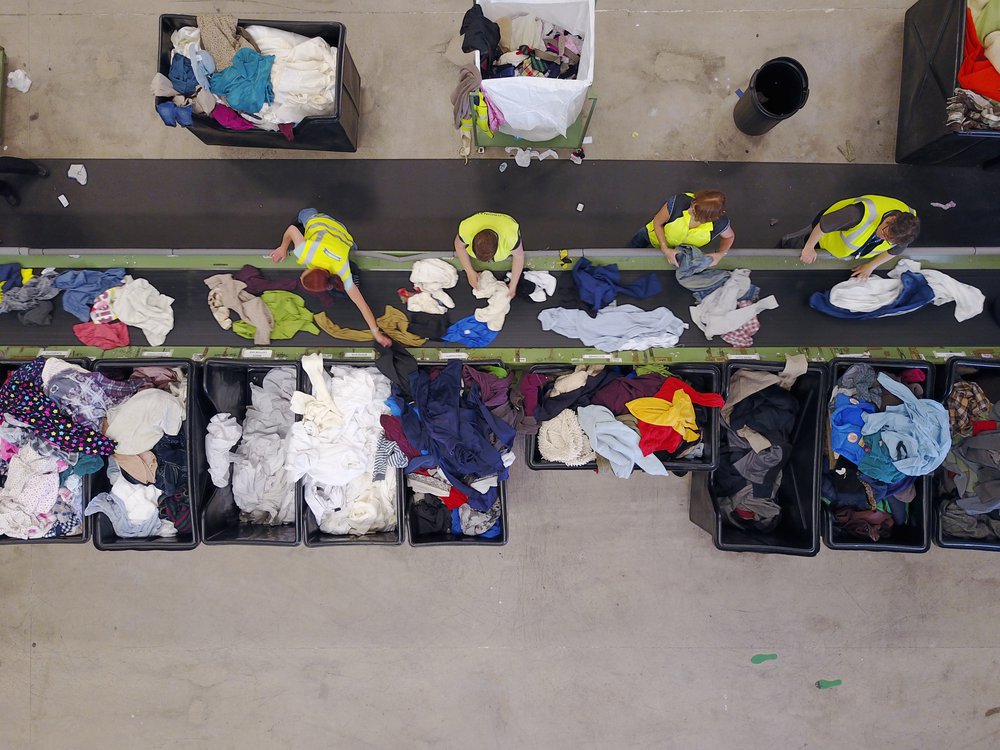Helping to Give Clothes a Longer Life
At Oxfam we work very hard to find a new use for every item of clothing you give.

Drop that coat, pair of jeans or top off at your nearby Oxfam shop and there's a good chance it will sell there. But what if it doesn't? At Oxfam, we work very hard to find a new use for every item of clothing you give. All thanks to hard-working specialist teams and volunteers, our partners and our busy sorting warehouse in Batley, West Yorkshire.
Oxfam has been doing the reusing and reselling thing since the 1940s when the first Oxfam Shop opened. Then, in 1974, Oxfam became the first national charity to develop its own facility for recycling and reusing clothes – helping reduce the number of clothes that go to landfill. Oxfam’s Batley warehouse and partners now handle 12,000 tonnes of textiles every year from donations to Oxfam.
What happens to your donated clothes if they don't sell in your local Oxfam shop?
Rachel Manns/Oxfam
1. Oxfam's high street shops
If you donate something, like a vintage dress, we know it will sell at a particular kind of Oxfam shop on the high street, so we'll send it there.
2. Oxfam's Online Shop
You might see your pre-loved clothing listed on our online shop or on an online marketplace like eBay, along with thousands of other items.
Sam Baggette/Oxfam
3. Oxfam's Festival Shops
Your clothes might end up at Glastonbury, or one of our many pop-up shops that we run throughout the summer in the UK.
Clothes at an Oxfam recycling plant. Credit: Kitty Norwell/Oxfam
4. Working with partners
Our recycling partners collects clothes, textiles, books and bric from across the country and gives new life to unsold stock.
Kitty Norwell/Oxfam
5. Oxfam's sorting centre
Your clothes and textiles are brought to Oxfam's unique recycling plant in Batley from the local area. Our experts then sort through it by hand, to decide where it should go next.
Why is Oxfam raising awareness about sustainable fashion?
- 4% of global CO2 emissions are caused by the clothing and apparel industry. The fashion industry produces 20% of all global wastewater.
- In the UK we buy more clothing per person than any other country in Europe.
- The poorest people on the planet, who did the least to cause climate change, are being affected the most – through droughts and floods
- Fast fashion thrives on low prices and that usually involves low wages – especially for women.
How can buying clothes from an Oxfam shop help the environment?
- Manufacturing a new pair of jeans has the same impact in terms of emissions as driving 60 miles in a petrol car.
- If each adult each year in the UK (on average) swapped buying one new pair of jeans for buying a pair of second-hand jeans instead, this would save the equivalent of over 3,246 million car miles (or over 3 billion car miles) in CO2 linked to jeans manufacturing. That's equivalent to flying a plane around the world more than 365 times.
By recirculating our clothes, buying and wearing second hand, we can help to reduce the demand for new clothes, which could in turn help to reduce the damage to our planet. Let’s help to make reusing clothes the new normal.
Visit in store, or online to find our extensive womenswear, menswear and accessories sections. As well as hundreds of designer and vintage items.
How can donating clothes to Oxfam help others?
Just the money raised from one dress could help us buy drought-resistant seeds for people in Zimbabwe and help them to keep growing food despite the impacts of climate change.